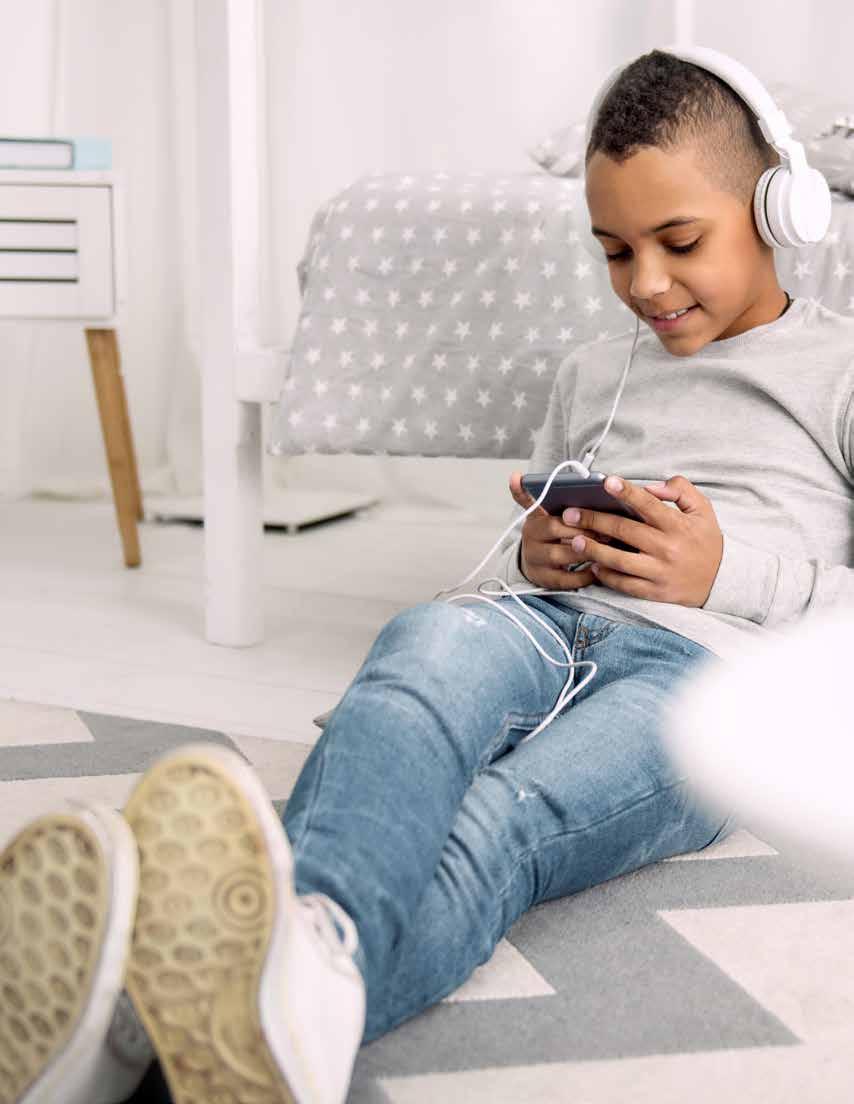
2 minute read
GETTING A HANDLE ON screen time
The new TV season. Televised football games. Online homework. These are just a few of the activities that draw our attention to screens this time of year. And with fewer hours of daylight and colder weather comes more time spent indoors on devices for kids and adults alike. So what's the big deal?
The digital downside
Too much screen time has been associated with:
• Sleep deprivation
• Obesity
• Vision problems
• Aches and pains
• Speech delays
• Poor social skills
• Aggressive behavior
• Exposure to unhealthy or inappropriate content
The studies are not conclusive, but experts caution that the overuse of screens may have significant effects on brain chemistry, especially in developing kids and teens. And screen time can be habit-forming: Children and adults can exhibit addictive behaviors around screen usage, such as irritability and symptoms of withdrawal, when screens are taken away.
How much screen time is OK?
RECOMMENDED USAGE IS ONLY 2 HOURS A DAY
Of course, not all screen time is bad. Technology connects us with others, gives us access to education, provides us with helpful tools and entertains us. But we need to be conscious of the time we’re spending with screens.
6 Ways to cut back on screen time
Pick a screen-free day
Choose a day of the week when everyone is required to ditch the devices. Encourage family members to participate in a fun physical activity, read a book or work on a non-digital project. (Tip: Make it fun by pairing “Taco Tuesday” with “Technology- Free Tuesday.”)
Practice what you preach
Be a good example for your kids – and your friends – by putting down your phone or turning off the TV when they’re around and giving them your full attention.
Try an “hour on, hour off”approach
If keeping track of your family’s overall screen time is challenging, establish an “hour on, hour off" rule. This gives your eyes and your brain a break and encourages you to stretch and move.
Designate media-free times
Make dinner, drive-time, outdoor play and family activities such as game night device-free. This goes for adults and kids.
Ban electronics from bedrooms
Mental activity and light prevent your body from heeding important sleep cues. So keep computers, phones and TVs out of bedrooms. If you use your phone as an alarm clock, put it out of reach when you turn in for the night. And stick to printed books for bedtime reading instead of a tablet.
Monitor usage and set limits
There are products you can use to set time limits, apply filters and monitor electronic usage for every member of the household. This not only provides limits for children, but can also help adults get an accurate snapshot of just how much time they’re spending connected to devices.


